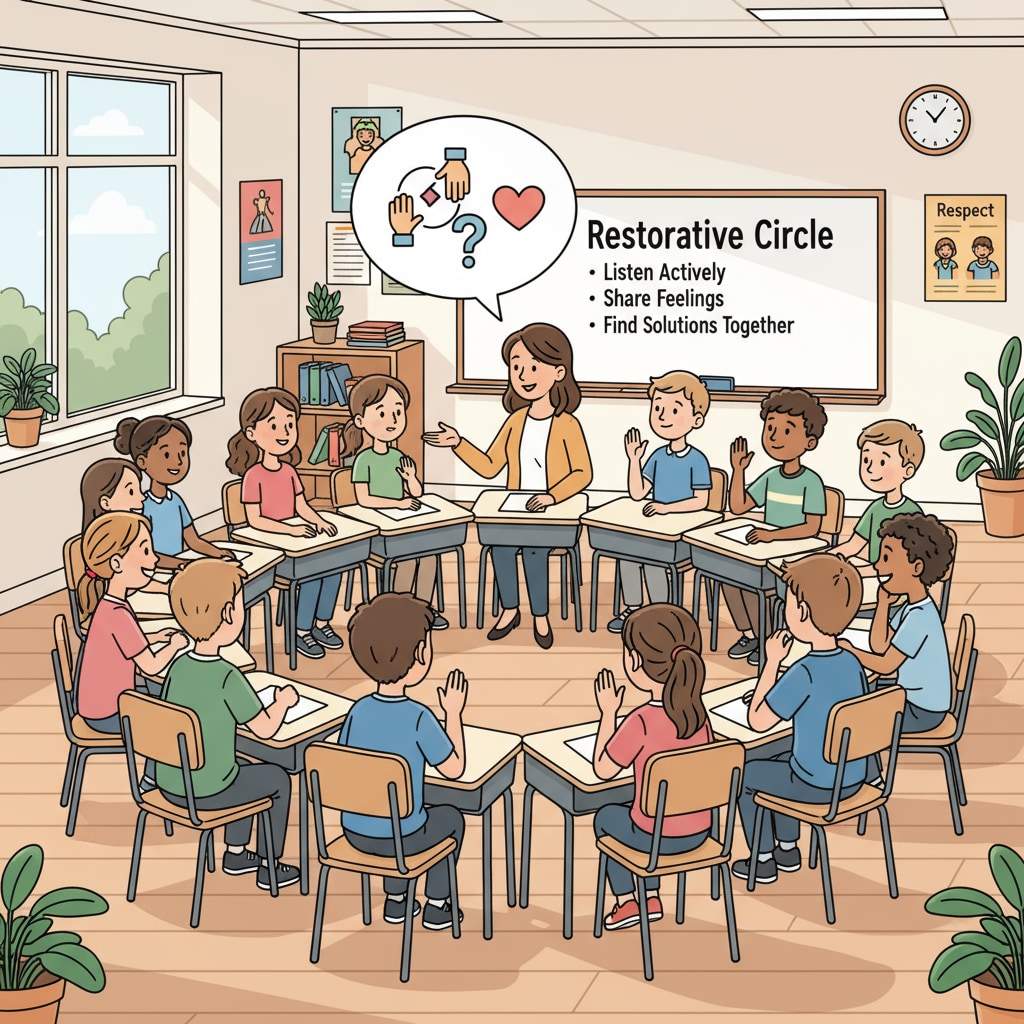In the complex landscape of school discipline, the clash between parental demands for strict punishment and the school’s restorative practices is a common challenge. Parents, often driven by concerns for their child’s behavior, may advocate for severe measures, while schools aim to foster a supportive environment through restorative approaches. This article will explore the origins of this conflict and provide practical strategies for school administrators to navigate this delicate balance.

The Root Causes of the Conflict
The conflict between parental expectations of punishment and the school’s restorative practices stems from several factors. Firstly, different parenting styles play a significant role. Some parents believe that strict discipline, such as detention or suspension, is the most effective way to correct their child’s misbehavior. They may have grown up in an environment where punishment was the norm and thus expect the same approach in school. For example, in some traditional families, physical punishment was used to enforce obedience, and these parents may transfer this mindset to the school setting. Secondly, a lack of understanding of restorative practices is prevalent among parents. Restorative practices focus on repairing harm, building relationships, and teaching problem-solving skills rather than simply punishing the offender. Many parents are unfamiliar with this concept and may view it as too lenient. According to Restorative justice on Wikipedia, restorative justice has been gaining traction in the criminal justice system, but its application in schools is still relatively new to many parents.

Strategies for Building Understanding
To address this conflict, school administrators need to take proactive steps to build understanding among parents. One effective strategy is to organize workshops or information sessions about restorative practices. These sessions can provide parents with an in-depth understanding of what restorative practices entail, how they work, and the benefits they offer. For instance, through role-playing activities, parents can experience firsthand how restorative conferences can help students take responsibility for their actions and make amends. Additionally, sharing success stories of restorative practices in the school can be powerful. Administrators can showcase how students have improved their behavior, built stronger relationships, and developed better social skills as a result of restorative interventions. This can help parents see the positive impact of these practices and gain confidence in them. As stated on Education on Britannica, effective communication and education are key to building trust between parents and schools.
Another important aspect is to involve parents in the restorative process. Schools can create opportunities for parents to participate in restorative conferences or mediation sessions. This allows parents to be actively involved in their child’s learning and growth, and also gives them a chance to understand the perspectives of other students and families. By working together with the school, parents can become partners in implementing restorative practices and see the value in them.
Readability guidance: In this section, we have used short paragraphs to clearly present each strategy. The list format helps to organize the key points. Transition words like “firstly”, “secondly”, and “additionally” are used to make the flow of the article smooth.


